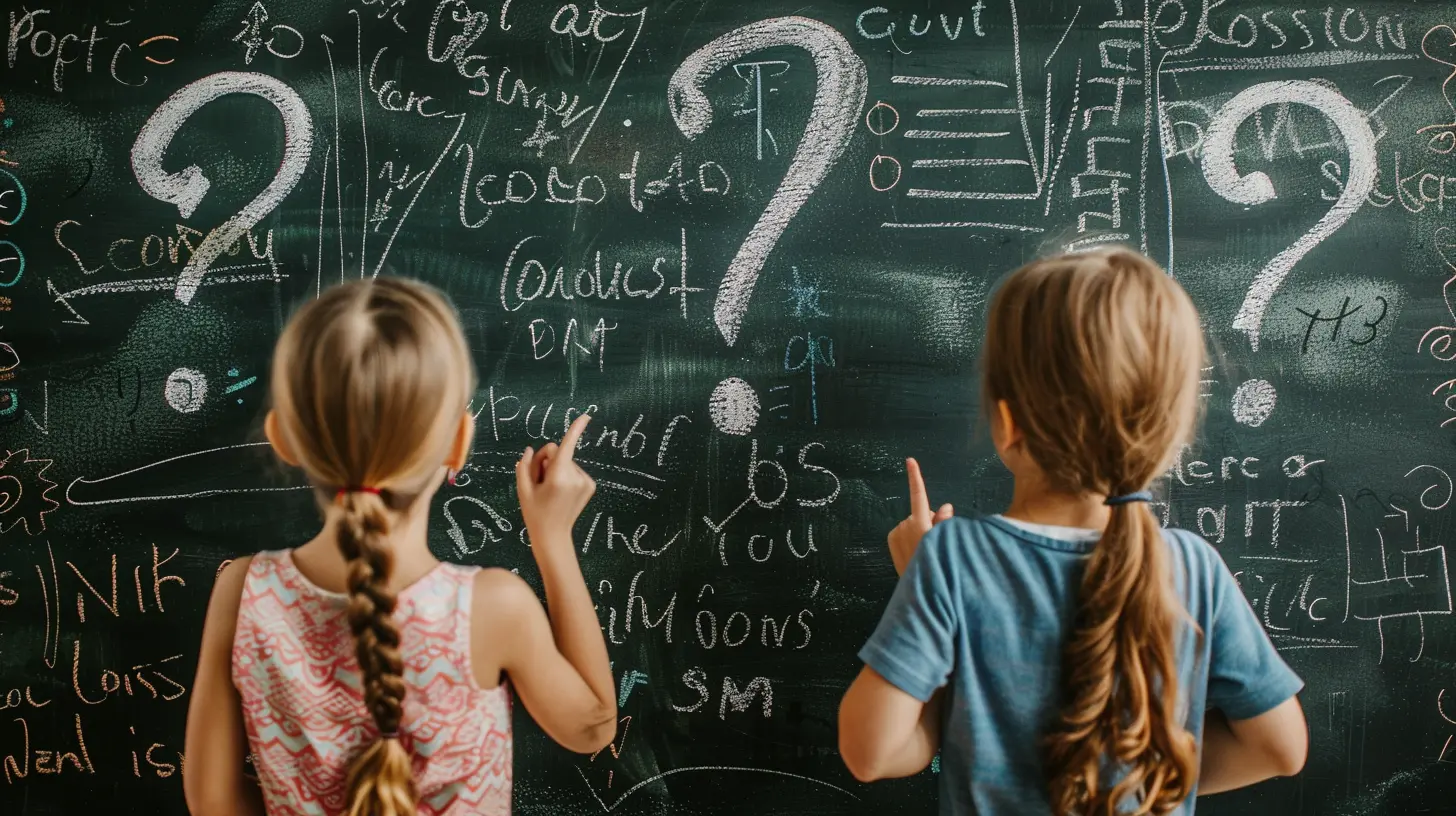The Science of Effective Questioning in the Classroom
6 July 2025
Have you ever noticed how a well-placed question can light up a student's eyes? It’s like striking a match, igniting curiosity, discussion, and deeper learning. But what makes a question truly effective in the classroom? Is it about asking more questions, or is it about asking the right ones?
Let’s dive into the science behind effective questioning in education and see how it can transform the way students think, engage, and ultimately, learn.

Why Questions Matter in Learning
Think about the last time you learned something new. Chances are, you had questions—lots of them! Questions drive curiosity, and curiosity fuels learning. In the classroom, the same principle applies.Effective questioning doesn’t just test knowledge; it encourages students to analyze, evaluate, and create new ideas. When students are actively engaged in answering thought-provoking questions, they move beyond memorization and into critical thinking.
The right questions can:
- Spark curiosity and make lessons more engaging.
- Encourage deeper thinking rather than surface-level understanding.
- Increase student participation and confidence in sharing ideas.
- Help teachers assess understanding and adjust teaching strategies accordingly.
But how do educators ask the “right” questions? Let's break it down. 
The Different Types of Questions in the Classroom
Not all questions are created equal. Some inspire discussion, while others simply check for factual recall. Here’s a closer look at the different types of questions teachers can use:1. Closed vs. Open-Ended Questions
- Closed Questions: These have a specific answer, like “What is the capital of France?” They’re great for quick checks but don’t encourage deeper thinking.- Open-Ended Questions: These invite students to think and analyze, like “How do you think climate change will impact future generations?”
Tip: Mix both types in your teaching. Start with closed questions to check basics, then follow up with open-ended ones to promote discussion.
2. Bloom’s Taxonomy and Questioning
Bloom’s Taxonomy is a well-known framework that categorizes learning objectives. Here’s how it can guide questioning:- Remembering (e.g., “What are the three branches of government?”)
- Understanding (e.g., “Can you explain why democracy is important?”)
- Applying (e.g., “How would you use geometry to design a park?”)
- Analyzing (e.g., “What are the similarities and differences between these two economic systems?”)
- Evaluating (e.g., “Which scientific theory do you find most convincing and why?”)
- Creating (e.g., “Can you design an experiment to test this hypothesis?”)
Using a range of Bloom’s levels ensures that students develop both foundational knowledge and critical thinking skills.
3. Socratic Questioning
Ever heard of the Socratic method? It’s all about asking deep, thought-provoking questions that force students to think critically. Examples include:- “Why do you believe that?”
- “What evidence supports your answer?”
- “Can you think of another perspective on this issue?”
This method keeps students engaged and encourages them to challenge their own thinking. 
The Psychology Behind Effective Questioning
So, why do some questions resonate more than others? It all comes down to psychology.1. The Power of Wait Time
Teachers often feel the need to fill silence, but did you know that waiting a few seconds after asking a question can lead to better answers? Research shows that giving students time to think leads to deeper responses and more participation.2. Cognitive Load Theory
Students can only process so much information at once. If a question is too complex, they might shut down rather than engage. Break down big questions into smaller, manageable parts to help students build their way up to complex thinking.3. The Curiosity Gap
Have you ever heard a cliffhanger at the end of a TV show and felt an urgent need to find out what happens next? That’s the curiosity gap in action! Asking questions that hint at interesting answers without giving them away can make students eager to learn.For example, instead of saying, “Today we’ll learn about black holes,” try asking, “What would happen if you fell into a black hole?” Watch how curiosity takes over! 
Strategies for Asking Better Questions in the Classroom
Now that we understand the types and psychology of questioning, let’s look at some practical strategies to level up your questioning skills.1. Use Think-Pair-Share
Instead of calling on one student immediately, ask a question and let students think on their own, then pair up to discuss, and finally share with the class. This method ensures that everyone engages with the question, not just the most confident students.2. Encourage Student-Generated Questions
Who says teachers should always be the ones asking? Encourage students to ask their own questions about the material. Not only does it make them more engaged, but it also helps them develop inquiry skills.3. Use Probing Questions
If a student gives a vague answer, don’t just move on. Follow up with:- “Can you explain that further?”
- “Why do you think that’s the case?”
- “What do you mean by that?”
Probing questions push students to think more deeply and articulate their thoughts more clearly.
4. Turn Wrong Answers into Learning Opportunities
Instead of simply correcting a wrong answer, ask, “That’s an interesting perspective—what made you think that?” This encourages a growth mindset and helps students refine their understanding without fear of embarrassment.5. Use Real-World Connections
Tie questions to real-life situations. For example, instead of asking, “How does supply and demand work?” try, “Why do concert ticket prices go up when demand is high?” Making connections to things students care about makes learning more meaningful.How Effective Questioning Transforms the Classroom
When teachers master the art of asking great questions, something incredible happens:- Lessons become interactive conversations rather than one-way lectures.
- Students become active learners who engage, analyze, and question rather than passively receive information.
- Critical thinking skills improve, helping students become better problem-solvers.
- Confidence grows, as students feel their ideas are valued.
The classroom transforms from a place of rote memorization to an exciting space where ideas flow, curiosity thrives, and deeper learning takes root.
Final Thoughts
Asking questions seems like such a simple thing, but when done effectively, it has the power to reshape the way students learn. It’s not just about finding the right answer—it’s about thinking, analyzing, and challenging assumptions.So, next time you step into the classroom, think about the questions you ask. Are they sparking curiosity? Are they pushing students to think? With the right questions, you can cultivate a culture of deep learning that lasts a lifetime.
all images in this post were generated using AI tools
Category:
Teaching StrategiesAuthor:

Eva Barker
Discussion
rate this article
1 comments
Soleil McIntire
What a delightful read! Effective questioning truly transforms the classroom experience, sparking curiosity and deeper understanding. Let’s inspire our students to think critically!
July 15, 2025 at 11:38 AM

Eva Barker
Thank you! I’m glad you enjoyed it. Inspiring critical thinking is indeed key to enhancing learning experiences!


